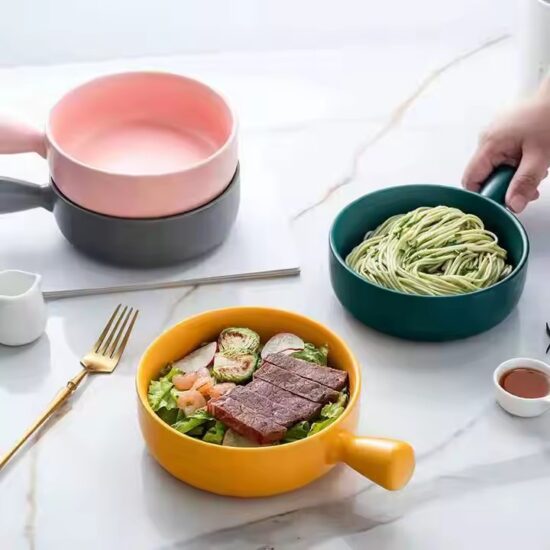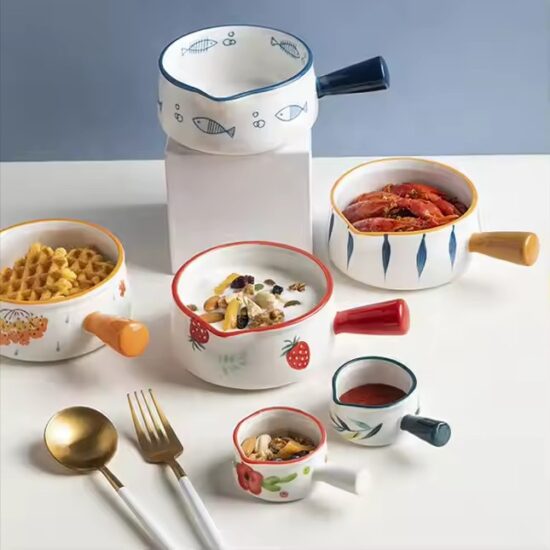bob@nbdho.com
The Role of Ceramics in Sustainable Development: Eco-Friendly Solutions for a Greener Future
The Role of Ceramics in Sustainable Development: Eco-Friendly Solutions for a Greener Future
Introduction
As the world moves toward more sustainable lifestyles and greener economies, every industry is being challenged to reduce its environmental impact. The ceramics industry—often associated with ancient craftsmanship—now plays a modern role in supporting sustainable development goals (SDGs) through eco-conscious materials, energy efficiency, and long product life cycles.
In this article, we explore how ceramics—especially in tableware, architecture, and industrial applications—can help build a more sustainable future.
1. ♻️ Ceramics Are Inherently Eco-Friendly
Ceramics are made from natural raw materials such as clay, kaolin, feldspar, and quartz. Unlike plastic or synthetic materials, they do not rely on petroleum-based resources.
Key Environmental Benefits:
-
Abundant raw materials (clay is widely available and non-toxic)
-
Inert and non-polluting after use—won’t leach chemicals into soil or water
-
Fully recyclable or crushable into new applications, such as road base or insulation
2. 💪 Durability Means Less Waste
Ceramic products are known for their long lifespan, which reduces the need for frequent replacement.
-
A ceramic bowl can last decades if well-made and cared for
-
High-temperature firing creates a dense, long-lasting material
-
Compared to disposable or low-quality alternatives, ceramics reduce waste and landfill impact
In sustainability terms, durability = lower carbon footprint over time.
3. 🔋 Energy-Efficient Innovations in Ceramic Manufacturing
Traditional ceramic kilns consume energy, but modern manufacturing is evolving with sustainable practices:
Modern Improvements:
-
Use of natural gas or electric kilns with better insulation
-
Heat recovery systems to reuse energy
-
Optimized kiln firing schedules to reduce fuel use
-
Solar-powered production lines (used in some advanced factories)
Sustainable ceramic factories are also adopting ISO 14001 environmental management systems and low-emission glazes.
4. 🌍 Ceramics and the Circular Economy
Ceramics support the principles of a circular economy:
-
Reuse: Broken ceramic waste can be ground and reused in new tiles or construction
-
Recycle: Leftover materials from production can be returned to the clay body
-
Rebuild: Ceramic’s thermal mass and strength make it ideal for sustainable architecture
In ceramic tableware production, defective pieces can often be crushed and reused internally—reducing raw material waste.
5. 🥣 Eco-Friendly Ceramic Tableware: A Growing Market
More consumers and brands are looking for eco-conscious dining solutions:
-
Lead- and cadmium-free glazes
-
Biodegradable or recycled packaging
-
Certifications such as LFGB, FDA, CA Prop 65
-
Minimalist, timeless designs that align with slow-living culture
Many manufacturers now offer custom eco lines, appealing to restaurants, hotels, and retailers with sustainability goals.
6. 🛠️ Supporting the UN Sustainable Development Goals (SDGs)
Ceramics can contribute to the following SDGs:
-
Goal 12: Responsible Consumption and Production
-
Goal 9: Industry, Innovation, and Infrastructure
-
Goal 11: Sustainable Cities and Communities
-
Goal 13: Climate Action
By producing long-lasting, safe, and environmentally friendly products, the ceramic industry is becoming a quiet but powerful ally in sustainability.
🧠 Conclusion: Ceramics for a Greener Future
Ceramics are not only beautiful and functional—they are also sustainable by nature and by design. With innovations in energy use, materials management, and product life cycles, the ceramic industry is making meaningful contributions to a greener planet.
If you’re a business looking to offer eco-conscious ceramic products, now is the time to align your brand with sustainability trends. As a manufacturer, supplier, or distributor, incorporating sustainable practices isn’t just good for the environment—it’s good for business too.
📞 Want to develop an eco-friendly ceramic product line or learn about our sustainable production standards?
Contact our team for consultation, samples, and collaboration opportunities.

